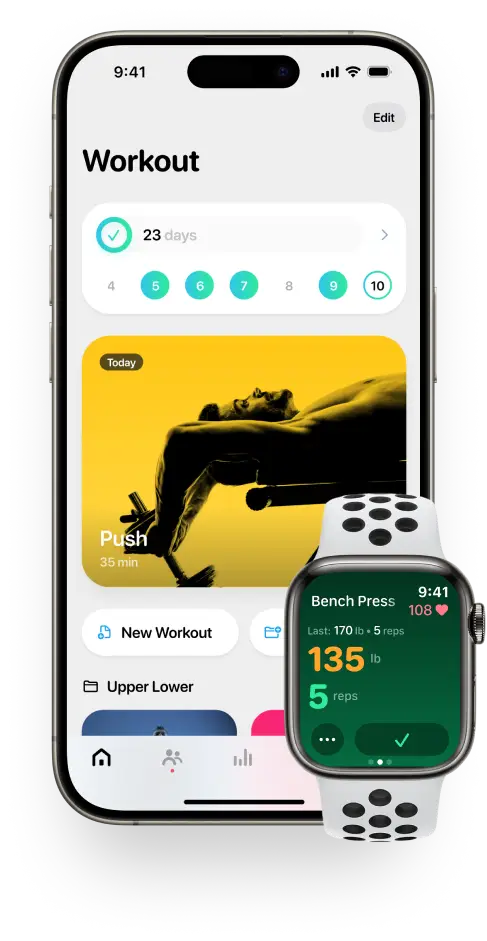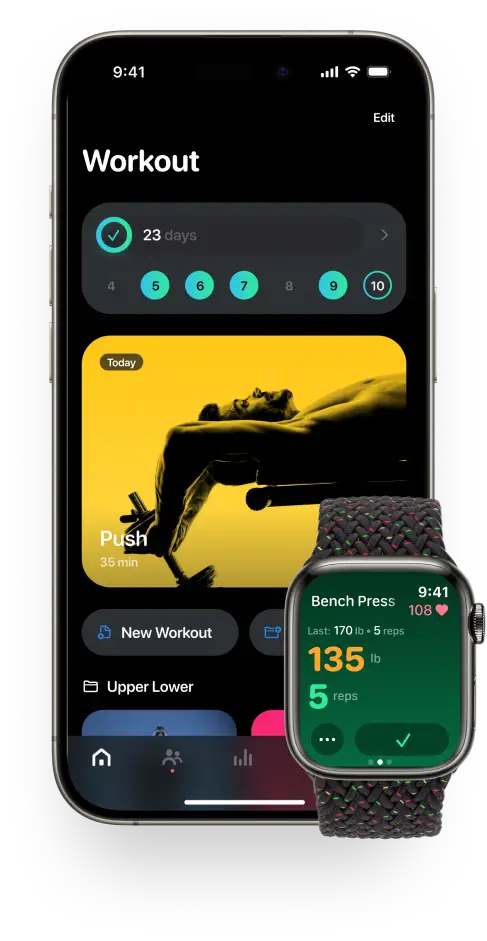Stop Believing These 10 Gym Myths (According to Science)
A lot of what we hear about exercise isn't backed by science. It's based on outdated beliefs, old gym legends, or just plain misunderstanding.
Fitness myths can derail your progress before you even start. Worse, they often lead to bad habits, wasted effort, or even injuries. By learning the truth, you give yourself a major advantage in a space that’s already full of noise and misinformation.
In this article, we're diving deep into the world of fitness myths. Our goal is simple: to help you separate fact from fiction so you can train smarter, stay safer, and get better results. Whether you're a beginner or someone who's been lifting for years, knowing the truth about these common fitness myths can change your approach and take your progress to the next level.
Why Gym Myths Spread So Easily
If you've ever wondered why fitness myths seem so hard to kill, you're not alone. These myths spread because they're often passed down from one generation to the next, repeated by well-meaning friends, trainers, or influencers. Sometimes they contain a grain of truth, which makes them even more believable. Other times, they're just easier to believe than the real, more complicated truth.
They also thrive in environments where anecdotal results are valued over science. Someone might get shredded after following a workout routine and attribute their progress to a myth-based method when, in fact, they were simply consistent or genetically gifted.
In the world of fitness, simple slogans like "no pain, no gain" or "lifting makes women bulky" catch on quickly because they're easy to remember and repeat. Add in a few dramatic transformation stories or a viral social media post, and suddenly, a fitness myth can seem like a fact. Understanding how and why these myths spread is the first step toward training smarter and building a strong, informed foundation for your fitness journey.

Top 10 Gym Myths and the Truth Behind Them
There are countless fitness myths out there, but some are especially stubborn. Let's bust the most common ones:
1. Lifting Weights Makes You Bulky
This fitness myth often scares people away from strength training, especially women. The truth? Building significant muscle mass requires years of heavy lifting, a calorie surplus, and very specific training. Lifting weights will make you stronger and leaner, not bulky.
In fact, strength training is one of the most effective ways to sculpt a toned, defined physique. It supports fat loss by increasing muscle mass, which burns more calories at rest.
2. You Need to Work Out Every Day to See Results
More isn't always better. Rest and recovery are critical for muscle growth and injury prevention. Training too much without giving your body time to heal can actually slow down your progress.
Many top athletes schedule at least one full rest day per week, with lighter “active recovery” sessions like walking or mobility work.
3. Spot Reduction Works
You can't choose where your body loses fat. Doing endless crunches won't give you a flat stomach if you don't reduce overall body fat through proper diet and exercise.
4. Sweating More Means You're Burning More Calories
Sweating is your body's way of cooling down. It doesn't directly correlate to how many calories you burn. Some intense workouts might make you sweat buckets, while others can torch calories without leaving you soaked.
For example, a strength training session in an air-conditioned gym might burn more calories than a hot yoga class, despite producing less sweat.
5. Cardio Is the Best Way to Lose Weight
While cardio helps burn calories, strength training boosts your metabolism over the long term. Building muscle increases the number of calories you burn at rest, making it a key part of any fat-loss program.

6. You Have to Feel Sore After Every Workout
Soreness can be a sign that you challenged your muscles, but it's not the only indicator of a good workout. Progress is measured by strength gains, improved endurance, and better movement quality—not just how sore you feel.
7. Supplements Are Necessary to See Results
Supplements can help fill nutritional gaps, but they're not magic pills. Most of your progress will come from consistent training, good sleep, and proper nutrition.
Whey protein, creatine, and caffeine are among the few supplements with strong evidence behind them but even these are optional.
8. Heavy Lifting Is Only for Young People
Fitness myths like this discourage older adults from strength training. In reality, resistance training is one of the best ways to maintain muscle mass, bone density, and mobility as you age.
9. You Can Out-Exercise a Bad Diet
No matter how hard you train, poor eating habits will limit your results. Nutrition plays a massive role in your ability to gain muscle, lose fat, and perform well.
10. Machines Are Safer Than Free Weights
Machines can be useful, but they aren't always "safer." Poor technique, even on a machine, can lead to injuries. Learning proper form with free weights often builds better balance, coordination, and real-world strength.
Understanding and overcoming these fitness myths will not only save you time and frustration but will also put you on a faster track to achieving your fitness goals.
How to Spot Bro Science
"Bro science" is a term used to describe fitness advice that's based more on anecdotal evidence than real scientific research. It often sounds convincing because it’s usually repeated by people who look the part: big muscles, ripped abs, flashy social media profiles. But just because someone is fit doesn’t mean their advice is scientifically valid.
To spot bro science, always ask: Is there research backing this claim? Is this information coming from a reputable source, like certified trainers, peer-reviewed studies, or recognized health organizations? Does it sound too good to be true? Trusting evidence-based practices over fitness myths will lead to safer, more effective training.
A good rule of thumb: if the advice comes with a lot of hype but no credible citations or long-term case studies, stay skeptical.

Evidence-Based Lifting Tips
Now that you know how to spot fitness myths and avoid bro science, what should you actually focus on? Evidence-based lifting strategies prioritize proven principles. Start with progressive overload: gradually increasing the weight, reps, or difficulty of your exercises.
Focus on compound exercises like squats, deadlifts, presses, and rows, which engage multiple muscle groups at once. Pay attention to form over weight, especially in the beginning. Make recovery a priority, not an afterthought. Follow a structured program tailored to your goals, and don't chase instant results. Building real strength and muscle takes time, consistency, and patience.
Shareable Takeaways
Fitness myths are everywhere, but you don't have to fall for them. Share these key takeaways with your friends, gym buddies, or on social media to help spread the truth:
- Lifting won't make you bulky unless you train and eat specifically for massive growth.
- You don't need to train every day to see progress—recovery is essential.
- Fat loss happens across the whole body, not in isolated spots.
- Cardio is great, but strength training is crucial for lasting results.
- Supplements are just that—supplements, not the foundation of success.
By staying informed and skeptical of fitness myths, you empower yourself to train smarter, avoid unnecessary risks, and make consistent progress toward your fitness goals. Always remember: real results come from science-backed strategies, not trendy gym slogans.
If you want professional tips on how to improve your workouts, download the Flex Fitness app now!
Related articles


Get fit with Flex
Build muscle & lose weight fast for free.
Available on iPhone + Apple Watch





